| This article needs additional citations for verification. Please help improve this article by adding citations to reliable sources. Unsourced material may be challenged and removed. Find sources: "Ottoman Serbia" – news · newspapers · books · scholar · JSTOR (May 2009) (Learn how and when to remove this message) |
| Ottoman SerbiaИсторија Србије у Османском царству (Serbian) | |
|---|---|
| 1459–1804 | |
 Territory of modern Serbia (including Kosovo) under Ottoman rule during the 16th century. Territory of modern Serbia (including Kosovo) under Ottoman rule during the 16th century. | |
| Common languages | Serbian |
| Religion | Sunni Islam (official) Christianity (Serbian Orthodox Church, Roman Catholicism) |
| Demonym(s) | Serb |
| Government | |
| Beylerbey, Pasha, Agha, Dey | |
| History | |
| • Conquest of Smederevo | 1459 |
| • Serbian Revolution | 1804 |
| Today part of | Serbia |
Ottoman Serbia refers to the Ottoman period in the history of Serbia. Various regions of medieval Serbia came under Ottoman rule already at the end of the 14th century, while the Serbian Despotate fell in 1459. Northern regions of what is now the Republic of Serbia were incorporated into the Ottoman Empire during later conquests, from 1521 to 1552. Since the Habsburg expansion towards those northern regions, in 1699 and 1718, Ottoman rule was gradually reduced to Serbian territories south of the Sava and Danube rivers (1739). From 1804 to 1830, the Principality of Serbia was gradually restored, as a vassal state of the Ottoman Empire. It gained independence in 1878, and expanded into southern regions, thus reducing Ottoman control to the historical region of the Old Serbia, that was liberated in 1912, thus ending Ottoman rule in Serbian lands.
The Ottoman conquest of the Balkans was initiated in the middle of the 15th century, leding to consequent conflicts with various Serbian states. The Ottomans defeated the Serbs at the Battle of Maritsa in 1371, and again at the Battle of Kosovo in 1389, forcing several Serbian regional lords to became sultan's vassals. In 1439, the Serbian Despotate was conquered for the first time, but restored in 1444. In 1459, the Despotate was conquered again, this time finally. Similarly, the Principality of Zeta was conquered by the Ottomans for the first time in 1479, but restored in 1481, to be finally conquered in 1496. In the meantime, the Kingdom of Bosnia was conquered by the ottomans in 1463, and the Duchy of Saint Sava in 1482. Thus by the end of the 15th century, Ottoman rule was established firmly, by imposing new provincial administration in conquered lads.
During the later periods, several revolts broke out against Ottoman rule in various Serbian lands, mostly with the help of the Habsburg Monarchy. Such were the Banat Uprising in 1594, the Uprising of 1688-1690, the Uprising of 1716–1718, and the Uprising of 1788-1791. Those uprisings were marked by the Great Migrations of the Serbs. In 1804, the Great Serabian Uprising boke out, leading to partial liberation of Serbia. It was crushed by the Ottomans in 1813, but already in 1815 the Second Serbian Uprising broke out, resulting in a new political settlement and the creation of the autonomous Principality of Serbia. Its territory was expanded in 1833, and again in 1878, also gaining full independence from the sultan and thus reducing Ottoman rule to historical regions of the Old Serbia. Those regions were liberated in 1912, thus ending the Ottoman period in the history of Serbia.
History
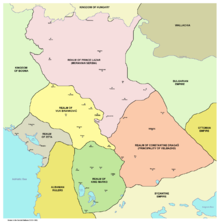
Ottoman conquest (1371–1552)
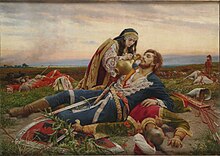
The Ottoman Turks defeated Serbian armies at the battle of Maritsa in 1371, where Serbian king Vukašin and despot Jovan Uglješa were killed, and again at the Battle of Kosovo in 1389, where Serbian prince Lazar and Ottoman sultan Murad I were killed. During that period, several regional lords were forced to became Ottoman vassals: king Marko, despot Jovan Dragaš and lord Konstantin Dejanović in 1371 and prince Stefan Lazarević in 1389. Already in 1386, Ottomans took Niš, and in 1392 they also took Skopje from Serbian lord Vuk Branković, who also became Ottoman vassal. In 1395, at the battle of Rovine, king Marko and lord Konstantin Dejanović were killed, and Ottomans annexed their domains, excluding the region of Vranje, that was held by Uglješa Vlatković, who also became Ottoman vassal.
The Battle of Kosovo defined the long-term fate of Serbia, because now it had no force capable of standing up to the Ottoman Turks directly. This was followed by an unstable period marked by the rule of Prince Lazar's son — despot Stefan Lazarević, who was at first a vassal of Sultan Bayezid I, distinguishing himself at the Battle of Nicopolis in 1396 and at Ankara in 1402, and later gaining independence after the death of Bayezid. His cousin and heir Đurađ Branković moved the capital of the Serbian Despotate to the newly built fortified town of Smederevo. The Turks continued their conquest until they finally seized remaining southern regions in 1455, establishing there the Sanjak of Vučitrn and the Sanjak of Prizren, and then proceeded by conquering all of northern territory of the Serbian Despotate by 1459, establishing there the Sanjak of Kruševac and the Sanjak of Smederevo. The only free Serbian territories remained as parts of Bosnia and Zeta. After the fall of the Duchy of Saint Sava in 1481-1482, and Principality of Zeta in 1496, Serbian lands were ruled by the Ottoman Empire for almost three centuries. Traditions of the Serbian Despotate were continued in southern parts of the Kingdom of Hungary by exiled members of the Branković dynasty and their successors until 1537.

From the 14th century onward an increasing number of Serbs began migrated north to the in southern parts of the Kingdom of Hungary, mainly the region today known as Vojvodina. The Hungarian kings encouraged the immigration of Serbs to the kingdom, and hired many of them as soldiers and border guards. Therefore, the Serb population of this region highly increased. During the struggle between the Ottoman Empire and Hungary, this Serb population attempted a restoration of the Serbian state. In the battle of Mohač on August 29, 1526, Ottoman Turkey destroyed the army of the Hungarian–Bohemian king Louis Jagellion, who was killed on the battlefield. After this battle Hungary broke up into three parts, and much of its former territory became part of the Ottoman Empire. Soon after the Battle of Mohač the leader of Serbian mercenaries in Hungary, Jovan Nenad "The Black", established his rule in Bačka, northern Banat, and a small part of Srem (These three regions are now parts of Vojvodina). He created an independent state with the city of Subotica as its capital. At the peak of his power Jovan Nenad crowned himself in Subotica as the Serb emperor. Taking advantage of the extremely confused military and political situation, the Hungarian noblemen from the region joined forces against him and defeated the Serbian troops in the summer of 1527. Emperor Jovan Nenad was assassinated and his state collapsed.
After the Siege of Belgrade, Suleiman I settled Serbs in the nearby Forest of Constantinople, in present-day Bahçeköy, known as Belgrade forest.
In 1557, Ottomans allowed the reestablishment of the Serbian Patriarchate of Peć, that existed until 1766, when it was abolished by the sultan.
Between Ottomans and Habsburgs

European powers, and Austria in particular, fought many wars against the Ottoman Empire, relying on the help of the Serbs who lived under Ottoman rule. During the Austro-Turkish War (1593–1606), in 1594, the Serbs staged an uprising in Banat, the Pannonian part of Turkey. Sinan Pasha retaliated by burning the remains of Saint Sava, the most sacred Serbian saint. Serbs created another center of resistance in Herzegovina, but when peace was signed by Turkey and Austria, they were abandoned to Turkish retaliation. This sequence of events became usual in the centuries that followed.
During the 16th and the 17th centuries, several Serbian uprisings against Ottoman rule broke out in various regions. In the Banat region, which then formed part of the Ottoman Eyalet of Temeşvar, in the area around Vršac, a large uprising began against the Ottoman Empire in 1594. It was the largest uprising of Serbian people against Ottoman rule till date. The leader of this uprising was Teodor Nestorović, the Bishop of Vršac. Other leaders were Sava Ban and voivode Velja Mironić.
For a short time, the Serb rebels captured several cities in Banat, including Vršac, Bečkerek, and Lipova, as well as Titel and Bečej in Bačka. The size of this uprising is illustrated by the verse from one Serbian national song: "Sva se butum zemlja pobunila, Šest stotina podiglo se sela, Svak na cara pušku podigao!" ("The whole land has rebelled, six hundred villages arose, everybody pointed his gun against the emperor"). The rebellion had the character of a holy war, the Serb rebels carrying flags with the image of Saint Sava. Sinan Pasha, who led the Ottoman army, ordered the green flag of Muhammad brought from Damascus to counter the Serbian flag, and burned the mortal remains of Saint Sava in Belgrade.
The Serb Uprising of 1596-97 in the region of Hercegovina and surrounding areas was organized by Serbian Patriarch Jovan Kantul and led by voyvode Grdan.
The Great War between Ottomans and the Holy League took place from 1683 to 1699. The Holy League was created with the sponsorship of the Pope and included Austria, Poland and Venice. These three powers incited the Serbs to rebel against the Ottoman authorities, and soon uprisings and guerrilla warfare spread throughout the western Balkans, ranging from Montenegro and the Dalmatian coast to the Danube basin and Old Serbia (Macedonia, Raška, Kosovo and Metohija). In 1688, Habsburg forces captured Belgrade, but lost the city already in 1690. However, when the Austrians started to pull out of Serbia, they invited the Serbian people to come north with them to the Austrian territories. Having to choose between Ottoman reprisal and living in a Christian state, Serbs abandoned their homesteads and headed north, led by Serbian Patriarch Arsenije III.
Ottoman Serbia in the XVIII century


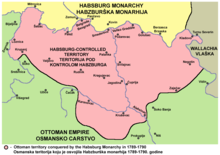
Borders established by the Treaty of Karlowitz in 1699 were stable until the breakout of the new Habsburg-Ottoman war (1716–1718), that ended with the Treaty of Passarowitz in 1718. Habsburg gained the region of lower Syrmia, the Banat of Temeswar, and Belgrade with central Serbian regions, that were organized, from 1718 to 1739, as the Habsburg Kingdom of Serbia (1718–1739). The fall of Habsburg Serbia during the next Habsburg-Ottoman war (1737–1739) was followed by the Second Great Migration of the Serbs from regions that fell under the Ottoman rule, into regions still held by the Habsburg Empire.
In the meanwhile, a Serbian-Russian noble, count Sava Vladislavich maintained contacts with Ottoman Serbs and was under the impression that they would rise in revolt against the Sultan as soon as Russians invaded the Danubian Principalities. Having launched the invasion in 1711, Tsar Peter sent him on a mission to Moldavia and Montenegro, whose population Vladislavich was expected to incite to rebellion. Little came of these plans, despite the assistance of a pro-Russian colonel, Michael Miloradovich (the ancestor of Count Miloradovich). Much later, Petar I Petrović-Njegoš, the Prince-Bishop of Montenegro (Serbian Orthodox Bishop of Cetinje), conceived a plan to form a new Serbian Empire out of Bosnia, central Serbia, Herzegovina and Montenegro with Boka, with Dubrovnik as its Imperial Capital. In 1807, he sent a letter to the Russian General of the Danube Army regarding this subject: "The Russian Czar would be recognized as the Tsar of the Serbs and the Metropolitan of Montenegro would be his assistant. The leading role in the restoration of the Serbian Empire belongs to Montenegro."
In the latter half of the XVIII century, officer Koča Anđelković led a successful Serbian rebellion against the Ottomans, during the last Habsburg-Ottoman war (1788–1791), hoping to place central Serbia under the Habsburg rule. The liberated territory was thus known as Koča's Frontier. The rebellion ended with the Treaty of Sistova and the withdrawal of Habsburgs in 1791-1792.
In the same tame, a prominent Serbian nobleman Sava Tekelija from the Habsburg Monarchy, conceived a plan for liberation of Serbian regions and recreation of national statehood. In the assembly of Serbian representatives, that was held in Temišvar (1790), he made a speech pleading for the legal inclusion of Serbian privileges into Hungarian state laws, and during the First Uprising (1804-1813) against the Ottoman rule, he made a map of Serbian lands that served as a political manifest. He sent letters to Napoleon proposing the establishment of a South Slavic political unit with Serbia at its core. To achieve that goal, he suggested that France should help the Serbs in order to suppress Russian influence in these territories. He sent a similar letter to Austrian Emperor Francis I in 1805. His project implied an establishment of a Serbian state, or more generally, a South Slavic state.
Ottoman Serbia 1791–1804


The withdrawal of the Austrians from Serbia in 1791 marked the end of the Serbian rebellion, which had been supported by Austria since 1787-1788. However Austria needed to settle the war, and returned the Belgrade region to the Ottoman Empire. Despite guarantees that Austria had insisted on, many of the participants in the uprising and their families went into exile in Austria. Reforms made by the Porte to ease the pressure on Serbs were only temporary; by 1799 the Janissary corps had returned, suspended Serb autonomy and drastically increased taxes, enforcing martial law in Serbia.
In 1802, renegade Janissary leaders, known as dahias, imprisoned and murdered Hadji Mustafa Pasha, sultan's governor in Belgrade, and imposed the rule of terror. Serbian leaders from both sides of the Danube began to conspire against the dahias. When they were found out in 1804, dahias rounded up and murdered 70 prominent Serbian leaders and priests, many of them being tortured and publicly executed in a spree of terror, known as the Slaughter of the Knezes.
First Serbian Uprising


The Slaughter of the Knezes at the beginning of 1804 outraged the Serbian people and incited the revolt across the Pashaluk of Belgrade. Within days, in the small Šumadija village of Orašac, the Serbs gathered on February 14th to proclaim the uprising, electing Đorđe Petrović, known as Kara-Đorđe (Black George) as the leader. That afternoon, a Turkish inn (caravanserai) in Orašac was burned and its residents fled or were killed, followed by similar actions country-wide. Soon the cities Valjevo and Požarevac were liberated, and the siege of Belgrade launched.
Initially fighting to restore their local privileges within the Ottoman system (until 1807), the rebels – supported by the wealthy Serbian community from the southern regions of the Austrian Empire (present-day Vojvodina) and Serbian officers from the Austrian Military Frontier – offered themselves to be placed under the protection of Habsburg, Russian and French Empires respectively, entering, as a new political factor, into the converging aspirations of the Great Powers during the Napoleonic wars in Europe.
During the almost 10 years of the First Serbian Uprising (1804–1813), Serbia perceived itself as an independent state for the first time, after more than 300 years of continous Ottoman and short periods of Habsburg occupations. Encouraged by the Russian Empire, demands for self-government within the Ottoman Empire in 1804 developed into a war for independence by 1807. Combining patriarchal peasant democracy with modern national goals, the Serbian revolution was attracting thousands of volunteers among Serbs from across the Balkans and Central Europe. The Serbian Revolution ultimately became a symbol of the nation-building process in the Balkans, provoking peasant unrest among Christians in both Greece and Bulgaria.
Following a successful siege with 25,000 men, on 8 January 1807 the charismatic leader of the revolt, Karađorđe Petrović, proclaimed Belgrade the capital of Serbia.
Serbian rebels also decided to establish their separate institutions: Governing Council (Praviteljstvujušči Sovjet) and other administrative bodies, aswell as educational institutions such as the Grand School (Velika škola) and the Theological Semminary (Bogoslovija). Karađorđe and other revolutionary leaders sent their children to the Grand School, which also had among its students Vuk Stefanović Karadžić (1787–1864), the famous reformer of the Serbian alphabet. Belgrade was repopulated by local military leaders, merchants and craftsmen, but also by an important group of enlightened Serbs from the Habsburg Empire who gave a new cultural and political framework to the egalitarian peasant society of Serbia. Dositej Obradović, a prominent figure of the Balkan Enlightenment, the founder of the Great Academy, became the first Minister of Education in modern Serbia in 1811.
Following the French invasion in 1812 the Russian Empire withdrew its support for the Serb rebels. Unwilling to accept anything less than independence, the revolutionaries were fought into submission following the Ottoman incursion into Serbia. One quarter of Serbia's population (at that moment around 100,000 people) were exiled into the Habsburg Empire, including the leader of the Uprising, Karađorđe Petrović. Recaptured by the Ottomans in October 1813, Belgrade became a scene of brutal revenge, with hundreds of its citizens massacred, and thousands sold into slavery as far away as Asia. Direct Ottoman rule also meant the abolition of all Serbian institutions, including the Grand School (Velika škola) and the return of Ottoman Turks to Serbia.
Hadži-Prodan's rebellion (1814)
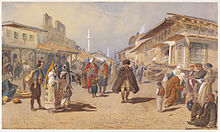
Despite the Ottoman reconquest, tensions nevertheless persisted. In 1814 the unsuccessful Hadži-Prodan's rebellion was launched by Hadži Prodan Gligorijević, a veteran of the First Serbian Uprising. He knew the Turks would arrest him, so he thought it best to resist the Ottomans. Milos Obrenović, another veteran, felt the time was not right for an uprising and did not provide assistance. Turkish authorities responded to the rebellion by massacring the local population and publicly impaling 200 prisoners at Belgrade. Hadži Prodan's uprising soon failed and he fled to Austria.
Second Serbian Uprising

The Second Serbian Uprising (1815) was a second phase of the national revolution of the Serbs against the Ottoman Empire, which erupted shortly after the brutal annexation of the country to the Ottoman Empire and the failed Hadži Prodan's revolt. The revolutionary council proclaimed an uprising in Takovo on April 23, 1815, with Milos Obrenović chosen as the leader (while Karađorđe was still in exile in Austria). The decision of Serbian leaders was based on two reasons. First, they feared a general massacre of knezes. Second, they learned that Karađorđe was planning to return from exile in Russia. The anti-Karađorđe faction, including Miloš Obrenović, was anxious to forestall Karađorđe and keep him out of power.
Fighting resumed at Easter in 1815, and Milos became the supreme leader of the new revolt. When the Ottomans discovered this they sentenced all of its leaders to death. The Serbs fought in battles at Ljubić, Čačak, Palez, Požarevac and Dublje and managed to reconquer the Pashaluk of Belgrade. Milos advocated a policy of restraint: captured Ottoman soldiers were not killed and civilians were released. His announced goal was not independence but to put an end to abusive misrule.
Wider European events now helped the Serbian cause. Political and diplomatic means in negotiations between the Prince of Serbia and the Ottoman Porte, instead of further war clashes coincided with the political rules within the framework of Metternich's Europe. Prince Miloš Obrenović, an astute politician and able diplomat, in order to confirm his hard-won loyalty to the Porte in 1817 ordered the assassination of Karađorđe Petrović. The final defeat of Napoleon in 1815 raised Turkish fears that Russia might again intervene in the Balkans. To avoid this the sultan agreed to make Serbia suzerain – a semi-independent state nominally responsible to the Porte.
Ottoman Serbia from 1815 to 1912
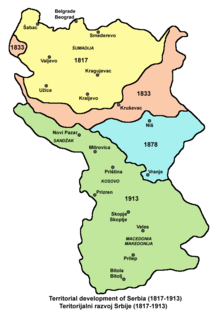
Since 1815, Ottoman Serbia was politically divided between the autonomous Principality of Serbia that was under sultans suzerainty, and the rest of Serbian regions that were under direct Ottoman rule. In 1833, a sultans charter (Hatt-i sharif) was issued, granting the expansion of the Principality towards six bordering regions. In 1841, the Niš rebellion broke out, but it was suppressed by Ottoman authorities.
During the Serbian–Ottoman Wars (1876–1878), southern regions were liberated and incorporated into the Principality, that was recognized as an independent state at the Congress of Berlin (1878), thus ending Ottoman suzerainty over the Serbian state, that was risen to the rank of Kingdom in 1882. Remaining Serbian regions under Ottoman rule were known as the Old Serbia. Those territories were liberated during the Balkan Wars (1912-1913) and incorporated into the Kingdom of Serbia, thus ending the Ottoman rule in Serbian lands.
Ottoman Serbs
Main article: Ottoman SerbsOttoman Serbs, who were Serbian Orthodox Christian, belonged to the Rum Millet (millet-i Rûm, "Roman Nation"). Although a separate Serbian millet (Sırp Milleti) was not officially recognized during Ottoman rule, the Serbian Church was the legally confirmed representative organization of the Serbs in the Ottoman Empire.
Gallery
-
Bajrakli Mosque, Belgrade, 1575
-
 Altun-Alem Mosque, Novi Pazar, 16th century
Altun-Alem Mosque, Novi Pazar, 16th century
-
 Mehmed Paša Sokolović's Fountain, Belgrade, 1576/77
Mehmed Paša Sokolović's Fountain, Belgrade, 1576/77
-
Islam-aga's Mosque, Niš, 1720
-
 Stari Han caravanserai in Kremna, Užice, early 19th century
Stari Han caravanserai in Kremna, Užice, early 19th century
-
 Skull Tower, Niš, 1809
Skull Tower, Niš, 1809
See also
References
- ^ Ćirković 2004.
- Ćirković 2004, p. 77-110.
- Bataković 2005.
- Pavlowitch 2002.
- Ćirković 2004, p. 111-248.
- Ćirković 2004, p. 77-87.
- Ćirković 2004, p. 87-110.
- Katić 2017, p. 41-48.
- Ćirković 2004, p. 115.
- Fotić 2008, p. 519–520.
- Sotirović 2011, p. 143–169.
- Šuletić 2017, p. 47-67.
- Nasuh, Matrakci (1588). "Execution of Prisoners, Belgrade". Süleymanname, Topkapi Sarai Museum, Ms Hazine 1517.
- Ćirković 2004, p. 142.
- Katić 2018, p. 79-99.
- Ćirković 2004, p. 143.
- Šuletić 2017, p. 31–39.
- Ćirković 2004, p. 151-154.
- Ćirković 2004, p. 185-186.
- Ćirković 2004, p. 160, 176-178.
- Krkljuš, Ljubomirka, On Sava Tekelija's programme for the renewal of the Serbian state , Zbornik Matice srpske za istoriju 2010, iss. 81, pp. 7–22, Document Archived 2012-03-17 at the Wayback Machine
- ^ Ćirković 2004, p. 178.
- Ćirković 2004, p. 178-179.
- Ćirković 2004, p. 179-180.
- Ćirković 2004, p. 178-180.
- Ćirković 2004, p. 180-182.
- ^ Ćirković 2004, p. 182.
- ^ Ćirković 2004, p. 182-183.
- Ćirković 2004, p. 183, 190.
- Ćirković 2004, p. 176-203.
- Ćirković 2004, p. 204-251.
- Serbian Studies. Vol. 9–10. North American Society for Serbian Studies. 1995. p. 91.
Sources
- Bataković, Dušan T., ed. (2005). Histoire du peuple serbe [History of the Serbian People] (in French). Lausanne: L’Age d’Homme. ISBN 9782825119587.
- Bronza, Boro (2010). "The Habsburg Monarchy and the Projects for Division of the Ottoman Balkans, 1771–1788". Empires and Peninsulas: Southeastern Europe between Karlowitz and the Peace of Adrianople, 1699–1829. Berlin: LIT Verlag. pp. 51–62. ISBN 9783643106117.
- Čanak-Medić, Milka; Todić, Branislav (2017). The Monastery of the Patriarchate of Peć. Novi Sad: Platoneum, Beseda. ISBN 9788685869839.
- Ćirković, Sima (2004). The Serbs. Malden: Blackwell Publishing. ISBN 9781405142915.
- Davies, Brian (2011). Empire and Military Revolution in Eastern Europe: Russia's Turkish Wars in the Eighteenth Century. London & New York: Bloomsbury Publishing.
- Fine, John Van Antwerp Jr. (1994) . The Late Medieval Balkans: A Critical Survey from the Late Twelfth Century to the Ottoman Conquest. Ann Arbor, Michigan: University of Michigan Press. ISBN 0472082604.
- Fotić, Aleksandar (2005). "Belgrade: a Muslim and non-Muslim cultural centre (Sixteenth-Seventeenth centuries)". Provincial Elites in the Ottoman Empire: Helcyon Days in Crete V. Rethymno: Crete University Press. pp. 51–75.
- Fotić, Aleksandar (2008). "Serbian Orthodox Church". Encyclopedia of the Ottoman Empire. New York: Infobase Publishing. pp. 519–520. ISBN 9781438110257.
- Hochedlinger, Michael (2013) . Austria's Wars of Emergence: War, State and Society in the Habsburg Monarchy, 1683–1797. London & New York: Routledge.
- Hupchick, Dennis P. (2002). The Balkans: From Constantinople to Communism. New York: Palgrave.
- Ingrao, Charles W. (2000) . The Habsburg Monarchy, 1618–1815 (2nd ed.). Cambridge: Cambridge University Press.
- Jelavich, Barbara (1983). History of the Balkans: Eighteenth and Nineteenth Centuries. Vol. 1. Cambridge University Press.
- Katić, Tatjana (2017). "Administrative Division, Settlements and Demographics in the First Centuries of Ottoman Rule" (PDF). Artistic Heritage of the Serbian People in Kosovo and Metohija: History, Identity, Vulnerability, Protection. Belgrade: Serbian Academy of Sciences and Arts. pp. 41–48.
- Katić, Tatjana; Vučetić, Biljana (2017). "In the time of the Ottoman Empire (1455-1912)" (PDF). Artistic Heritage of the Serbian People in Kosovo and Metohija: History, Identity, Vulnerability, Protection. Belgrade: Serbian Academy of Sciences and Arts. pp. 365–377.
- Katić, Tatjana (2018). "Walking through the ravaged City: An Eyewitness Testimony to Demolition of the Belgrade Fortress in 1690". Belgrade: 1521-1867. Belgrade: The Institute of History. pp. 79–99.
- Kursar, Vjeran (2013). "Non-Muslim Communal Divisions and Identities in the Early Modern Ottoman Balkans and the Millet System Theory". Power and Influence in South-Eastern Europe, 16th–19th century. Berlin: LIT Verlag. pp. 97–108. ISBN 9783643903310.
- Miljković, Ema (2009). "Ottoman Heritage in the Balkans: The Ottoman Empire in Serbia, Serbia in the Ottoman Empire". SDU Faculty of Arts and Sciences Journal of Social Sciences: Special Issue on Balkans: 129–137.
- Miljković, Ema (2010). "The Christian Sipahis in the Serbian Lands in the Second Half of the 15th Century" (PDF). Београдски историјски гласник: Belgrade Historical Review. 1: 103–119.
- Miljković, Ema (2014a). "Toward the Rehabilitation of the Social History of the Serbs During the Ottoman Rule: The Serbian Society in the 15th Century". Journal Human Research in Rehabilitation. 4 (2): 50–52.
- Miljković, Ema (2014b). "The Timar System in the Serbian Lands from 1450 to 1550: With a Special Survey on the Timar System in the Sanjak of Smederevo". Osmanlı Mirası Araştırmaları Dergisi: Journal of Ottoman Legacy Studies. 1 (1): 36–47.
- Miljković, Ema; Strugarević, Svetlana (2015). "The Bridge Between Old and New: The Serbian Society in the First Century of the Ottoman Rule". Studies of the Ottoman Domain. 5 (9): 18–38.
- Miljković, Ema (2020). "Everyday Life in The Sanjak of Smederevo During the First Century of the Ottoman Administration: Urban vs. Rural". The Balkans Everyday Life and Culture. Lyon: Livre de Lyon. pp. 1–18. ISBN 978-2-490773-45-9.
- Pavlowitch, Stevan K. (2002). Serbia: The History behind the Name. London: Hurst & Company. ISBN 9781850654773.
- Pešalj, Jovan (2010). "Early 18th-Century Peacekeeping: How Habsburgs and Ottomans Resolved Several Border Disputes after Karlowitz". Empires and Peninsulas: Southeastern Europe between Karlowitz and the Peace of Adrianople, 1699–1829. Berlin: LIT Verlag. pp. 29–42. ISBN 9783643106117.
- Radosavljević, Nedeljko V. (2010). "The Serbian Revolution and the Creation of the Modern State: The Beginning of Geopolitical Changes in the Balkan Peninsula in the 19th Century". Empires and Peninsulas: Southeastern Europe between Karlowitz and the Peace of Adrianople, 1699–1829. Berlin: LIT Verlag. pp. 171–178.
- Rajić, Suzana (2010). "Serbia - The Revival of the Nation-state, 1804-1829: From Turkish Provinces to Autonomous Principality, 143-148". Empires and Peninsulas: Southeastern Europe between Karlowitz and the Peace of Adrianople, 1699–1829. Berlin: LIT Verlag. pp. 143–148. ISBN 9783643106117.
- Roider, Karl A. (1972a). The Reluctant Ally: Austria's Policy in the Austro-Turkish War, 1737–1739. Baton Rouge: Louisiana State University Press.
- Roider, Karl A. (1972b). "The Perils of Eighteenth-Century Peacemaking: Austria and the Treaty of Belgrade, 1739". Central European History. 5 (3): 195–207.
- Sotirović, Vladislav B. (2011). "The Serbian Patriarchate of Peć in the Ottoman Empire: The First Phase (1557–94)". Serbian Studies. 25 (2). NASSS: 143–169. doi:10.1353/ser.2011.0038. S2CID 143629322.
- Stavrianos, Leften (2000) . The Balkans Since 1453. London: Hurst. ISBN 9781850655510.
- Sugar, Peter F. (1996) . Southeastern Europe under Ottoman Rule, 1354-1804. Seattle: University of Washington Press.
- Šuletić, Nebojša (2017). "Under Ottoman Rule: Until the End of the 18th Century". Artistic Heritage of the Serbian People in Kosovo and Metohija: History, Identity, Vulnerability, Protection. Belgrade: Serbian Academy of Sciences and Arts. pp. 31–39.
- Šuletić, Nebojša (2021). "Usurpations of and Designated Successions to the Throne in the Serbian Patriarchate: The Case of Patriarch Moses Rajović (1712-24)" (PDF). Balcanica. 52: 47–67.
| Ottoman period by modern country or region | |
|---|---|
| Africa | |
| Asia | |
| Europe | |
| Serbia articles | |||||||||||
|---|---|---|---|---|---|---|---|---|---|---|---|
| History |
|  | |||||||||
| Geography | |||||||||||
| Politics |
| ||||||||||
| Economy |
| ||||||||||
| Society |
| ||||||||||
- Ottoman Serbia
- Islam in Serbia
- 15th-century establishments in Serbia
- 1912 disestablishments in Serbia
- 1459 establishments in the Ottoman Empire
- 1912 disestablishments in the Ottoman Empire
- States and territories established in 1459
- States and territories disestablished in 1912
- Military occupations of Serbia
